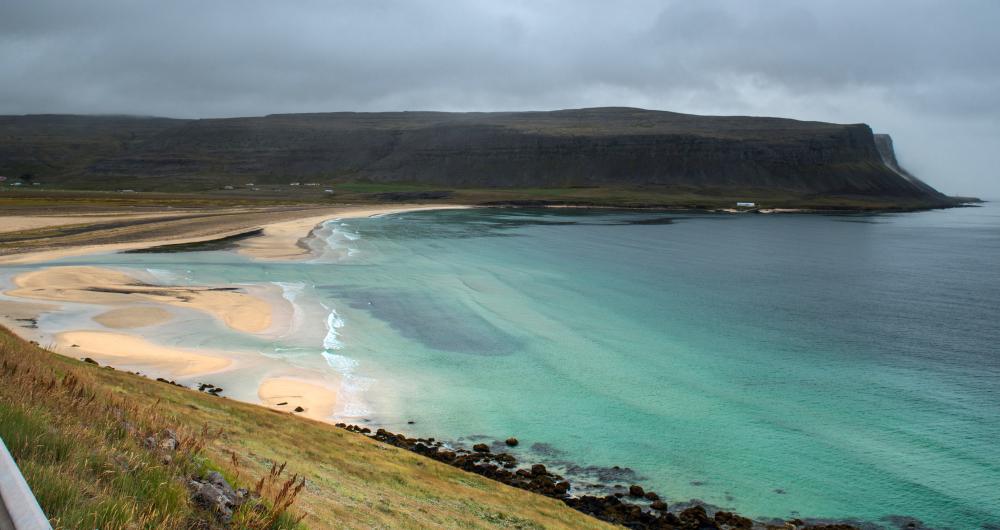In This Article
Want to see black sands, dramatic cliffs, and icy-blue waters? In this post, I’ll share the otherworldly beaches I discovered in Iceland—where black sands, crashing Atlantic waves, and dramatic coastal cliffs reveal the raw, untamed beauty of the island’s shoreline. These breathtaking Iceland beaches offer otherworldly coastal scenery perfect for photographers, explorers, and nature lovers!
This is what I recommend that you do:
- Marvel at the famous black sands and basalt columns of Reynisfjara Beach near Vik.
- Explore the ice-strewn shores of Diamond Beach, where glacier fragments glitter on the sand.
- Stroll the red sands of Rauðasandur Beach in the Westfjords for a unique coastal experience.
- Discover the dramatic cliffs and birdlife at Dyrhólaey Arch and Beach.
- Walk along the peaceful black sands of Stokksnes Beach with views of Vestrahorn Mountain.
Unique Iceland Beaches:
1. Breidavik
Walk along golden sands and admire stunning cliffs and coastal sights.
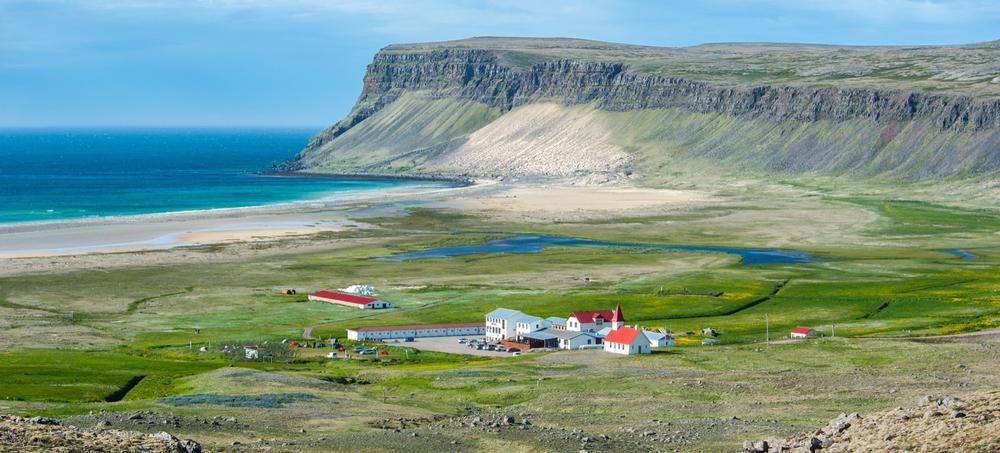
© forcdan/stock.adobe.com
Location:
Breidavik,
Westfjords Region, Northwestern Iceland Recommended For:
Nature lovers, birdwatchers, campers, photographers, and travelers seeking remote beaches surrounded by wild Icelandic landscapes.
What we Love:
Unlike most of
Iceland’s black-sand beaches,
Breidavik surprises visitors with its
wide stretch of golden sand, bordered by
towering cliffs and
lush grassy meadows. Its tranquil setting and abundant birdlife make it one of the most scenic and serene spots in the country.
- Camp under the stars surrounded by mountains, grassy plains, and seabird calls.
- Stroll the expansive shoreline, enjoying the rare sight of golden sand in Iceland.
- Watch for North Atlantic Puffins nesting in the cliffs during summer breeding season.
Cost:
Beach access is free. Camping may incur a small fee at designated areas. Guided birdwatching or fishing tours may be available through local providers.
Best time to visit:
June through August for the best weather, golden light, and puffin sightings. Summer offers the most comfortable conditions for camping and exploring.
Local tips:
Pack warm clothing, even in summer—temperatures can be chilly. Bring binoculars and a camera for puffin viewing. Nearby Latrabjarg cliffs, one of Europe’s largest seabird colonies, are also worth a visit.
Distance:
About 25 miles (40 km) west of Patreksfjörður and roughly 250 miles (400 km) from Reykjavík.
How to Get to Breidavik:
Drive from Patreksfjörður via Route 612 through the stunning Westfjords landscape. Car rental is essential, as public transport is limited. Roads are gravel in parts—check conditions in advance and allow time for scenic stops.
2. Sandvik
Explore rugged shores and enjoy a peaceful, unusual beach escape.
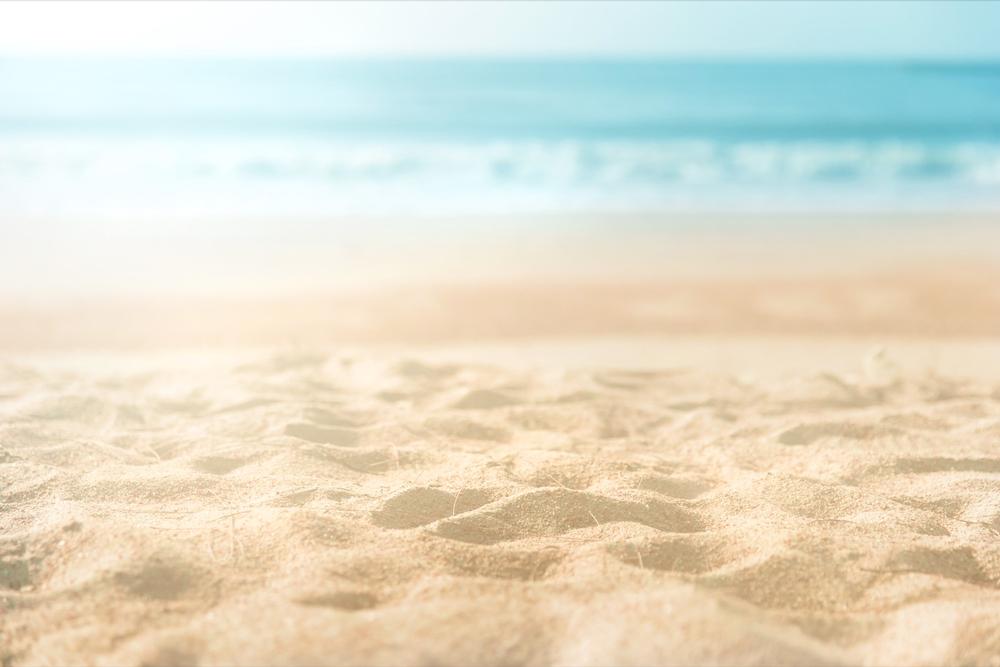
© Tawanboonnak/stock.adobe.com
Location:
Sandvik Beach,
Reykjanes Peninsula, Southwestern Iceland Recommended For:
Surfers, nature lovers, photographers, thrill-seekers, and visitors looking for rugged, otherworldly Icelandic beauty.
What we Love:
Sandvik Beach is a dramatic stretch of
black volcanic sand bordered by windswept cliffs and wild Atlantic waves. It's one of Iceland’s top spots for
cold-water surfing and a unique destination to
experience raw nature at its finest.
- Surf the powerful North Atlantic waves—if you're up for the cold water challenge and strong winds.
- Admire the vast, stark landscape and watch surfers ride the icy waves from shore.
- Walk across the famous old wooden bridge for panoramic views of lava fields, cliffs, and coastline.
Cost:
Free public access. No rentals or lifeguard services available—surfers must bring their own gear and exercise caution.
Best time to visit:
May to September for the mildest weather and best access. Surf conditions can vary, so experienced surfers should check local wave and wind forecasts in advance.
Local tips:
Wear windproof layers—this beach is known for its strong gusts. Bring a thermos and camera for a scenic picnic with dramatic backdrops. If you're not surfing, the bridge is a must-see viewpoint.
Distance:
About 11 miles (18 km) west of Grindavík and roughly 35 miles (56 km) from Reykjavík.
How to Get to Sandvik Beach:
Drive from Reykjavík via Route 41 to Route 425 through the Reykjanes Peninsula. A rental car is recommended. Follow signs to the "Bridge Between Continents"—Sandvik Beach is just a short walk from there.
Iceland Beaches for Couples:
3. Vestrahorn
Admire breathtaking mountain views and explore black sand beaches.
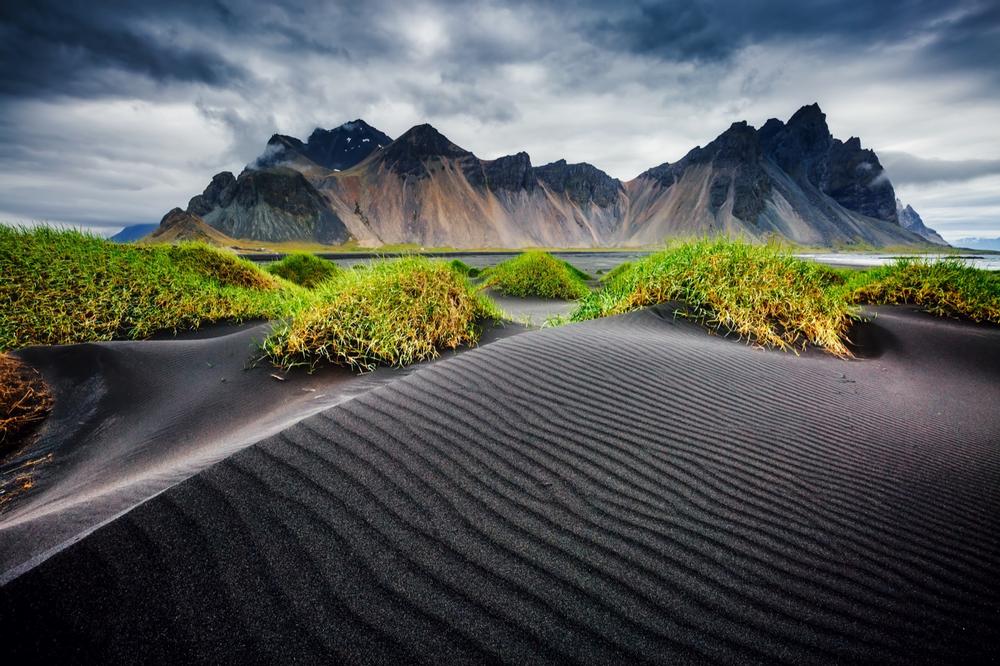
© Leonid Tit/stock.adobe.com
Location:
Vestrahorn Beach,
East Fjords Region, Southeastern Iceland Recommended For:
Landscape photographers, history buffs, nature lovers, families, and travelers seeking breathtaking isolation and cinematic scenery.
What we Love:
Vestrahorn Beach offers a surreal, storybook-like setting on Iceland’s remote east coast. With its
jagged, snow-dusted peaks,
black sands, and
icy shoreline, this beach is a magnet for those seeking
solitude, dramatic views, and a sense of wonder.
- Wander through a Viking village film set now abandoned—an eerie, fascinating glimpse into Icelandic lore.
- Discover the old lighthouse and shipwreck that add historic charm to the wild setting.
- Explore a mix of wet black sands, marshy greens, and mountain reflections—perfect for photography and quiet contemplation.
Cost:
Entry to the beach and Viking village is generally paid (small fee) as it sits on private land. The fee helps maintain the site. There are basic facilities and a parking area near the entrance.
Best time to visit:
April through October for easier access and clearer weather. Winter months are magical too but may require 4x4 access and extra caution due to snow and ice.
Local tips:
Bring waterproof footwear—the beach is often damp and marshy. Sunrise and sunset offer the most magical lighting for photos. Be mindful of drone rules if flying. Nearby Höfn is a good base for food and lodging.
Distance:
About 10 miles (15 km) east of Höfn and roughly 290 miles (470 km) from Reykjavík.
How to Get to Vestrahorn Beach:
Drive from Höfn along Route 1 (Ring Road) and follow signs to Stokksnes. Access is through a private gate at the Viking Café, where you’ll pay the entrance fee. A rental car is essential for flexibility in this remote area.
4. Alftanes
Walk along serene shores and enjoy a quiet, scenic retreat.
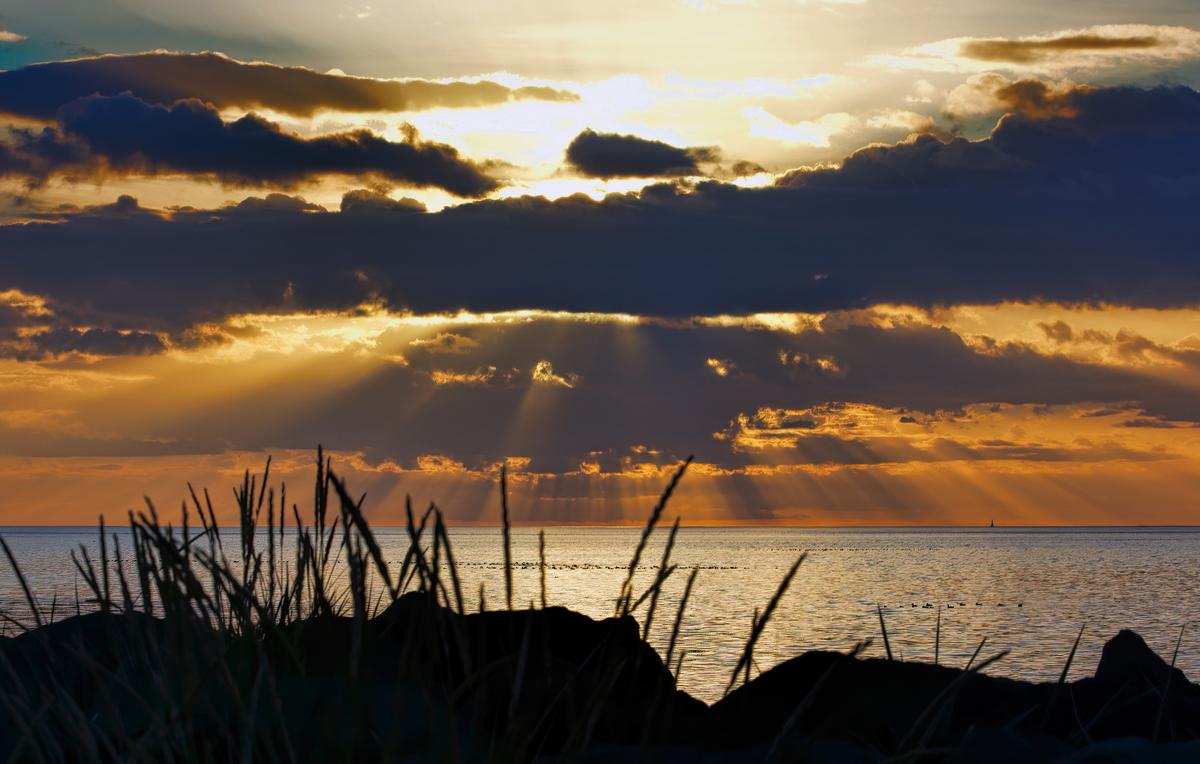
© francis/stock.adobe.com
Location:
Álftanes Beach,
Greater Reykjavík Area, Southwestern Iceland Recommended For:
Urban explorers, history enthusiasts, families, photographers, and travelers looking for a quick scenic getaway from Reykjavík.
What we Love:
Álftanes Beach is just minutes from the capital, yet it feels worlds away. Its
unique landscape of golden sand interspersed with volcanic rock gives it an otherworldly charm. Add a touch of Icelandic history and coastal serenity, and you’ve got one of Reykjavík’s most accessible hidden gems.
- Stroll along the volcanic and sandy shoreline, collecting unusual rocks and seashells as keepsakes.
- Visit the nearby Álftaneskirkja church and uncover the rich history of this seaside settlement.
- Explore historical landmarks, including the site of an old fort and a coastal area once used for executing pirates and outlaws.
Cost:
Free public access. There are no fees to explore the beach or surrounding attractions. Bring your own snacks and supplies, as amenities are limited.
Best time to visit:
May to September for milder temperatures, longer daylight, and better walking conditions. Sunset visits offer especially dramatic views.
Local tips:
Wear sturdy shoes due to the rocky sections of the beach. Ideal for a half-day trip from Reykjavík—combine it with a visit to Bessastaðir, the Icelandic presidential residence nearby. Bring a camera to capture both the beach and historical architecture.
Distance:
Approximately 10 miles (16 km) or a 15–20 minute drive from central Reykjavík.
How to Get to Álftanes Beach:
Drive from Reykjavík via Route 40 and Álftanesvegur. Public buses also service the Álftanes area, though a car provides more flexibility. The beach is easily reached and well-signed, with small parking areas nearby.
I get asked this a lot so I decided to include it:
-
What are some common misconceptions about Iceland?
- Many people make some big misassumptions when thinking about Iceland.
-
Is Iceland always cold?
- They look at the country’s name and geographical location and assume that it must be the sort of place where big coats and lots of layers need to be worn at all times of year to help people stay warm.
-
Does Iceland have outdoor recreation options?
- It's true that temperatures in Iceland never get too high, but the country has a lot of options for outdoor recreation, especially in the summer months.
-
What do Icelandic people do when the sun is shining?
- One of Icelandic people's favorite activities when the sun is shining is to head down to the beach with friends or family.
-
What activities can be enjoyed on Iceland's beaches?
- Arctic swimming and surfing can be enjoyed here if you're bold enough, but many of Iceland's beaches are best-suited for shelling, beachcombing, relaxing, and admiring the picturesque, pristine views all around.
Best Time to Visit Beaches in Iceland
- June to August – Milder weather and long daylight hours, perfect for exploring black sand beaches and coastal cliffs.
- July & August – Peak season for sightseeing, ideal for visiting Reynisfjara and Diamond Beach.
- May & September – Fewer tourists and beautiful light, great for peaceful beach walks and photography.
- October to April – Cold and windy, but dramatic scenery and a chance to spot the Northern Lights by the shore.
- Late June – Experience the midnight sun while exploring Iceland’s stunning coastal landscapes.
How did I do?
Is the article too broad, too narrow, or just right ? Do you like the presentation of photos and text? Let me know in the comments! If you want to see more in this location, I can put it on my editorial calendar. I'm listening!
Plan Your Trip


